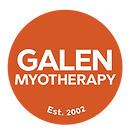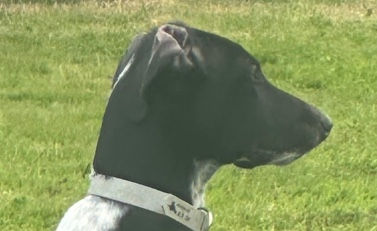An insight into Julia's book 'How to Build A Puppy... Into A Healthy Adult Dog'
- Galen Myotherapy

- Mar 20
- 5 min read
‘Building our puppy’s bodies correctly is vital for their health, it is just as important as developing their social skills and emotional cognition. Like puppy socialisation, building a puppy’s body correctly has a limited window of opportunity’, is one of the key messages from the puppy exercise book by Julia Robertson.

This book also answers the commonly asked question: "How much exercise does my puppy need?" It provides a clear and detailed explanation, along with a practical plan called the Galen Myotherapy Puppy Physical Development Programme, which highlights the importance of proper exercise for developing puppies and adolescents.
It explains the challenges of introducing puppies to environments and lifestyles they aren’t naturally designed for. Their bodies aren’t built for the homes we live in—slippery floors, cars, furniture they are expected to jump on and off, and the types of exercises we provide, as well as certain equipment. Since our homes don’t replicate a natural environment, it’s essential to adapt and support our puppies’ development, guiding nature to help them grow properly.
While the list of potential issues may seem overwhelming for current or future puppy owners, this book offers practical, cost-effective solutions. By making simple changes to your environment, you can promote your puppy's muscular health and well-being.
The book explains in clear and accessible terms how to provide appropriate stimulation for a puppy’s body to grow strong and resilient.

Dog’s anatomy has hardly changed, above a 18,000 year old Russian puppy, named ‘Dogor’ found preserved in a layer of permafrost in Siberia. Found by Russian scientists in 2019. Copyright Dr Sergey Feborov, North-Eastern Federal University.
It also takes us on a brief history of man and canine cohabiting, discussing how our living environments and lifestyles have changed so much in the last 50 years. Also how so many of our current practices, both living and environment have changed, raising the question about whether it is these elements that are having such a negative impact on our puppies' formative months and their healthy futures?
The inspiration to write this book was primarily drawn on from her extensive experience as a therapist of treating dogs for 20 years; and when she started she was literally the only practitioner (that either she, or google, knew about!) specialising in treating chronic muscular issues in dogs, using clinical massage techniques. Now of course there are literally thousands of therapists and although it is wonderful that dogs have a myriad of different treatment modalities, isn't it sad that there is such a recent exponential demand?
Where does Galen Myotherapy fit within the writing of this book?
Galen Myotherapy specialises in treating dogs, but is also passionate about prevention, because prevention is always better than cure. One of the most common problems they see, and have seen over the years, are dogs with muscle imbalance. Meaning that their muscles are not working together properly, to create not just strength and speed, but something that is possibly even more important, which is muscle stability. Different muscles have different roles, some are power muscles, for running and jumping, and some hold the joints securely during actions, this could be referred to as correct muscle activation and patterning. It takes specific formative exercises to activate the muscles that hold the joints securely and these, in Galen’s experience and opinion, are commonly not working in the dogs they treat as well as sporting and working dogs. This pattern of movement creating functional myofascial connections must be encouraged and developed in our puppies' formative development, and this is what the book describes, both the how and the why.
Galen Myotherapy has been built from sound scientific knowledge, and ongoing observations of thousands of dogs; I am a practical person, and need practical, natural and dog-choice derived solutions that are easy to implement in my busy life. I felt that from my experience, if we could improve and change the culture of how we develop our puppies, it would have a hugely positive impact on dogs now and in the future. These are the foundations and rationale behind the How to Build your Puppy book’. Julia Robertson
What others have said about 'How To Build A Puppy ……..Into A Healthy Adult Dog'.
"Dog behaviour consultants, instructors and dog owners are crying out for this information. For instance, people frequently ask 'how much exercise should I give my puppy?' and this book not only answers that but shows that there are other better ways to exercise a dog than walking in a straight line". Foyles synopsis and review
"Using her world-renowned Galen Myotherapy knowledge and approach, Robertson suggests and explains in detail how small, profoundly important but easy to implement changes can improve the way we not only look after and develop our puppies but also how maintenance of this easy programme continues your puppy’s journey through into healthy adolescence and maturity". Amazon book review
"Should be standard reading for all dog owners, dog instructors, dog behaviour consultants, dog shelters, veterinarians students, veterinarians, and all other education's and organisations that have to do with dogs in our society". Abstract from the Foyles synopsis
Practical and well explained, Julia’s love for dogs shines through every page. I believe it will have a huge impact on our work with dogs in the future. Turid Rugaas - International dog trainer and author of On Talking Terms with dogs: Calming Signals
FOYLES FULL REVIEW:
Fills a gap in the market for a book that advises on the physical side of developing and maintaining a healthy puppy, as well as a rehomed older dog. There's lots on behavioural training, but nothing on this essential element. Dog behaviour consultants, instructors and dog owners are crying out for this information. For instance, people frequently ask 'how much exercise should I give my puppy?' and this book not only answers that but shows that there are other better ways to exercise a dog than walking in a straight line.
Without knowledge of dog anatomy and physiology, people can exercise their dogs in ways
that (and create environments that) have negative and long-lasting impacts on
canine health.
Useful and applicable for professionals and owners no matter what behavioural training
technique they use.
Useful for veterinarians and other people working in healthcare with dogs because it gives
in-depth description of functional anatomy and the overall musculoskeletal
system, as well as practical information and illustrations that can be
recommended to their clients, making that part of their job easier.
Internationally applicable.
In most books, the point of focus is the human, but the focal point of this book is the
puppy. What does living with humans mean to him? This is refreshing and needed.
Julia's accessible, light-hearted writing style makes the more challenging technical
aspects easy to comprehend. The many colour illustrations are a great help in
understanding the text and link explicitly to everyday experience.
Julia Robertson is the expert in this field: her book is based on novel theory and
many years of experience.
Should be standard reading for all dog owners, dog instructors, dog behaviour
consultants, dog shelters, veterinarians students, veterinarians, and all other
education's and organisations that have to do with dogs in our society.








Comments